Those who love beautiful nature reserves and historic villages will love these places. From bird watching on the Wadden Islands to making clogs in monumental villages, these are the most beautiful sights in the Netherlands.
Small country, big enjoyment. That’s the Netherlands. The country where people know how to fight against and with the water like no other with Delta works, locks and windmills. Cycle through the Frisian landscape to the nicest cities of the Elfstedentocht or dream away at the beauty of the Drenthe heath. Discover the historic dolmens and put your toes in the sand on the coast of Zeeland. These are the most beautiful sights in the Netherlands.
1. The flying island visitors of Schiermonnikoog
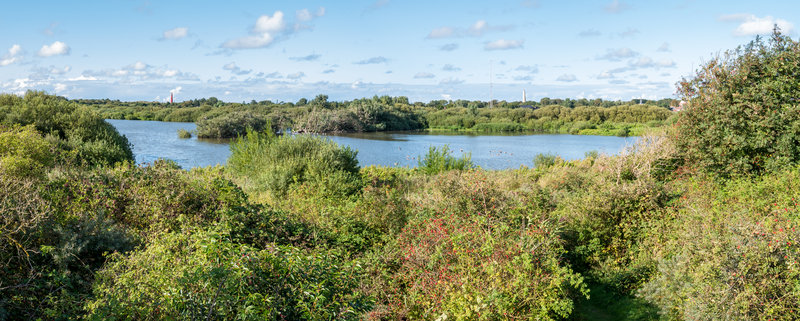
Forests and dunes full of fragrant flowers, the beach, the tidal flats and vast polders full of birds: Schiermonnikoog is a large national park. Partly because the island is car-free and less than a thousand inhabitants live there, peace and space are central. The murmur of the wind, washing waves and singing birds form the melody of the island.
Discover the Westerplas, a former salt marsh (vegetated area that is flooded at high tide) that was diked in 1964. As a result, the water slowly changed from salt to fresh, much to the delight of the many waterfowl. For example, the mysterious bittern hides in the reed collars, the songbirds such as the bluethroat and reed bunting sing loudly and almost all Dutch duck species swim around here happily. Admire the winged island visitors from the bird hide, in the middle of the water. Tip: take a jutta bag with you during your walk on the beach to collect waste and thus contribute to the preservation of nature.
2. Spot the ‘Veluwe big five’
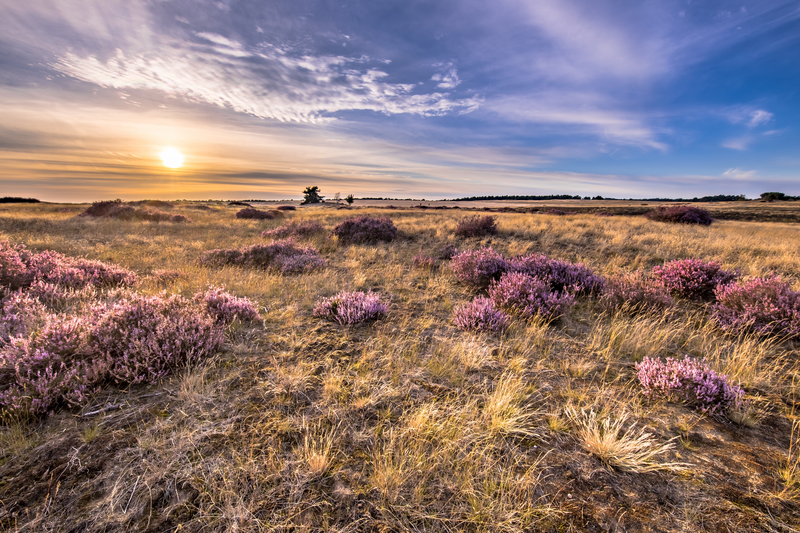
National Park De Hoge Veluwe is one of the most beautiful places of interest in the Netherlands due to its great variety of nature. Grab one of the park’s free bicycles or walk through the 5,500 hectares of beautiful nature. Colorful heathlands that change into dark patches of forest, before ending up again in vast drifting sands. It all comes along during your cycling tours through our ‘national jungle’. Keep your eyes open and spot the Veluwe big five: red deer, wild boar, mouflon, fallow deer and roe deer. Walk or cycle in the orange glow of the sunset or sunrise, the time when you have the best chance of spotting wildlife.
In addition to the wonderful smell of nature, you can also sniff culture in the park. Visit Doorwerth Castle, where Erik Hazelhoff wrote ‘Soldaat van Oranje’. Or admire modern art by Mondrian and Van Gogh, among others, in the Kröller Muller Museum.
3. Fighting against the water: the windmills of Kinderdijk
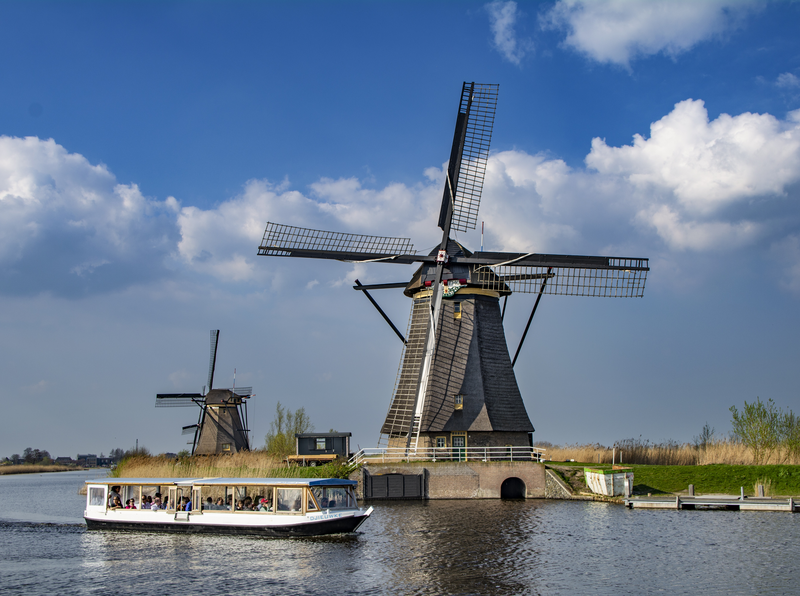
If there is something typically Dutch, it is our windmills. Although they have disappeared in many places over the years, they still tower proudly above the polder in Kinderdijk, South Holland. A thousand years ago, the area consisted of peat swamp with wild rivers on one side and the sea on the other. Due to the fertile soil, more and more people wanted to settle in the area. After flooding and the breaching of dikes, the first windmills were built around the year 1740 and we succeeded in keeping our feet dry.
Explore the area by tour boat, bicycle, horse-drawn tram or on foot. The 7.5-kilometre Kinderdijkpad takes you past all nineteen historic windmills. The Blokweerse mill is now a museum. Discover here how people, nature and technology come together in a sustainable way in the windmills. Let the millers in traditional costume immerse you in the life of Kinderdijk in the fifties and see up close how the paddle wheel pumps up the water.
4. Travel through time along the stones of Drenthe
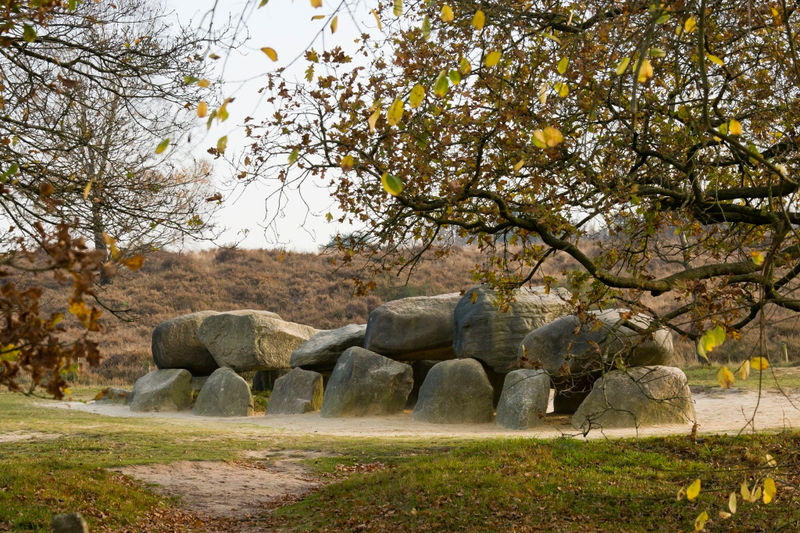
In Drenthe you can find many traces from prehistoric times. From glacier pits from the ice ages to burial mounds and prehistoric fields. Take a journey through the time of mammoths, dolmen builders and a minister with a lot of imagination.
In 1922 the Gieten-Borger forestry was built by hand. They found millions of boulders in the ground that we now know are remnants of the penultimate ice age, about 150,000 years ago. Glaciers hundreds of meters thick brought stones with them from Scandinavia, which were left behind when the ice melted. The foresters gratefully used them for the construction of cobbled paths that made transport easier. Also admire the larger stones of Drenthe: the dolmens. In the 17th century Reverend Picardt thought they were the graves of barbarian giants, whom he called ‘hunes’ . Except that the burial mounds were made by human hands, the pastor was not far off the mark. Discover all 54 Dutch dolmens and learn more about the construction and function of the stones in the Hunebed Center in Borger.
5. A fine piece of work: the Zeeland Delta Works
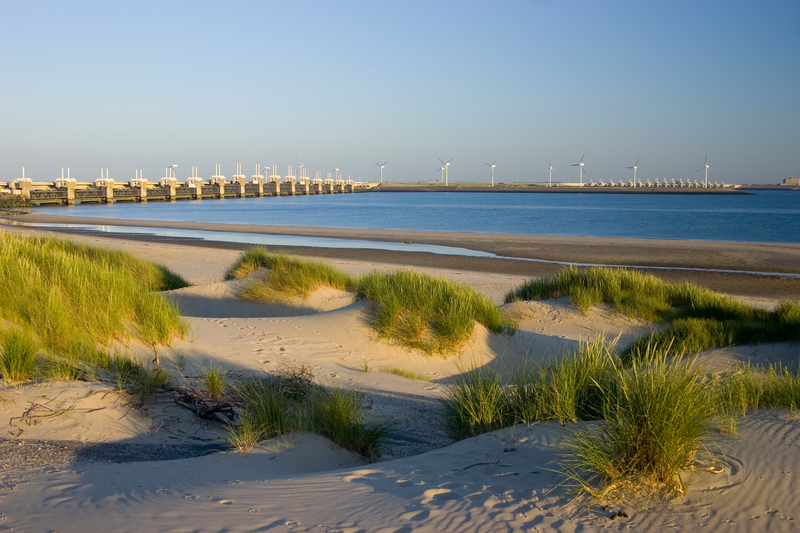
Here on the coast, the Zeeland coast. Get a breath of fresh air on Zeeland’s 650-kilometre coastline, taste the salty sea air and spot many bird species and seals. It is striking that nature and the steel Delta Works form a great contrast, yet they work together harmoniously.
The Oosterscheldekering is regarded as the crowning glory of the Delta Works. Hydraulic engineers from all over the world come to Zeeland to admire this piece of technology. Originally, the Oosterschelde was to be closed off from the North Sea by a dam. This would ensure that the water became fresh, resulting in the disappearance of many saltwater animals and plants, the oyster and mussel industry and fishing. In 1979 it was therefore decided to build a storm surge barrier that would only be closed in severe weather or extreme high water. Learn more about the construction and operation of the Delta Works at the former work island of Neeltje Jans.
6. Explore the Elfstedentocht by bike
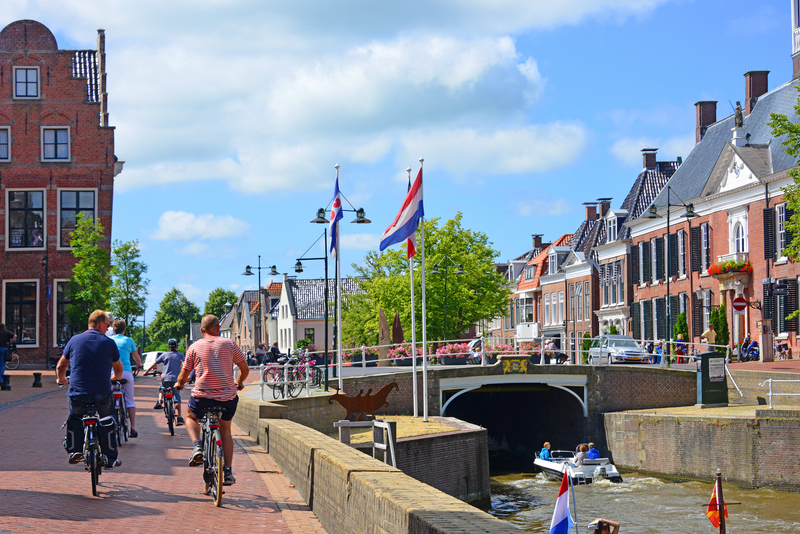
The province of Friesland guarantees the real holiday feeling in our own country. Its own language and culture, the many lakes and picturesque towns make the idiosyncratic province, according to the Frisians themselves, ‘it best lân fan d’ierde’ (the best country on earth). Discover the route of the Elfstedentocht. Not on skates, but on a bike. With the advantage: whether it freezes or thaws, it pours oan!
For example, cycle to Franeker. Visit the Planetarium that Eise Eisinga built in his living room in the 18th century, an accurate model of the universe. Or Balk, the town that inspired poet Herman Gorter to write some of the most famous lines of Dutch poetry: ‘A new spring, a new sound.’ With windblown hair, heavy legs and a healthy blush on your cheeks, you end up satisfied on the terrace after an impressive day.
7. Spotting beavers in the Biesbosch
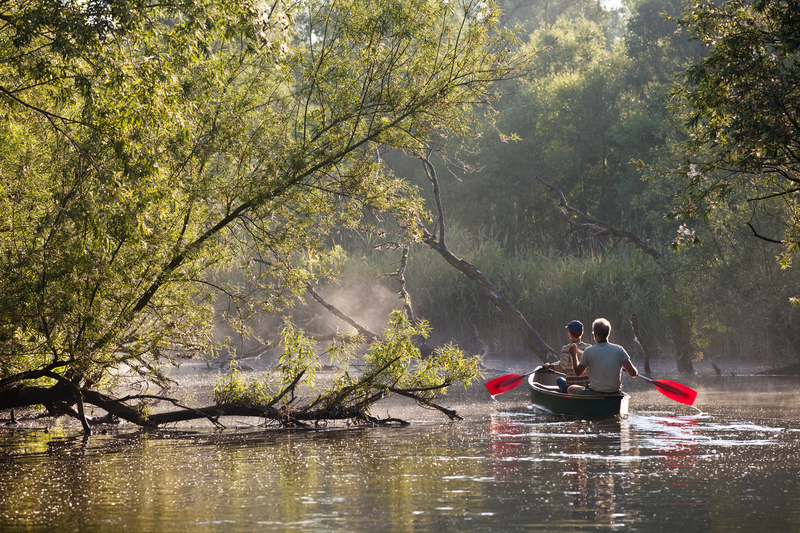
Be amazed by one of the most unique nature reserves in the Netherlands: the Biesbosch. This nature reserve was created by the Sint-Elisabeth flood of 1421, a flood disaster in the counties of Zeeland and Holland, and is the largest freshwater tidal area in Europe. The Biesbosch consists of two parts: the South Holland and the Brabant Biesbosch, separated by the river De Merwede. The area is full of willow tidal forests, a maze of creeks, crooked trees and is rich in an enormous diversity of fauna. From beavers and frogs to Scottish Highlanders and the imposing sea eagles. Or even a seal that has slipped through the Haringvliet locks.
Special is the presence of the beaver, symbol of the Biesbosch. The animal was completely extinct in the Netherlands in 1825, but fortunately it is now clearly visible again. Since five beaver pairs were released in the park in 1988, they have been back. And how! With more than 250 specimens, they provide fortresses under construction, gnawed branches and feeding marks on trees.
8. Water for defence: the Defense Line of Amsterdam
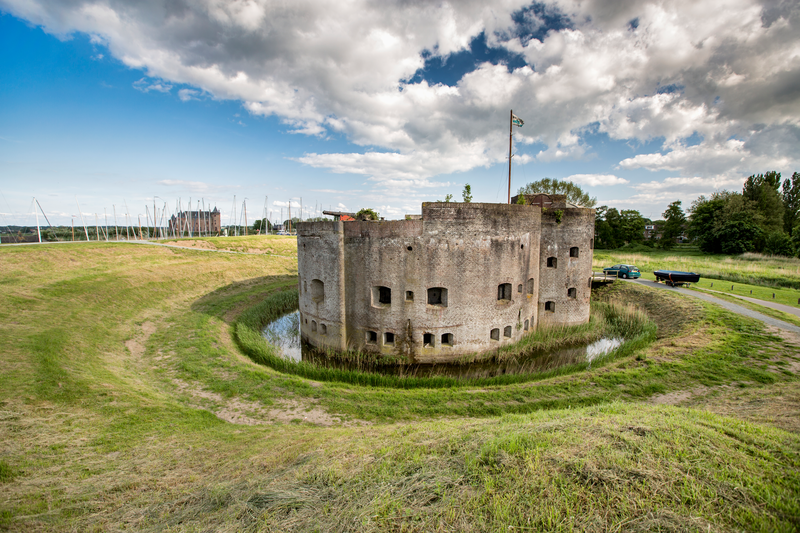
Between 1880 and 1914, a 135-kilometre long defense line was built around Amsterdam – the Defense Line of Amsterdam – to protect the capital against cannon fire and enemy domination. In an emergency, the position would serve as a ‘National Reduit’, a place where the army, the government and the king or queen would hide. At a distance of 15 to 20 kilometers from Amsterdam, 46 forts, batteries, dikes and locks were built to keep out the enemy.
The Netherlands wouldn’t be the Netherlands if we didn’t use hydraulic engineering to protect Amsterdam. A smart sluice system allowed the land around the line to be flooded. Just the right amount of water: too shallow for ships and too deep for people and horses. Although the position was never fully operational, this special piece of hydraulic engineering is on the World Heritage List.
9. Orvelte: the primeval village of Drenthe
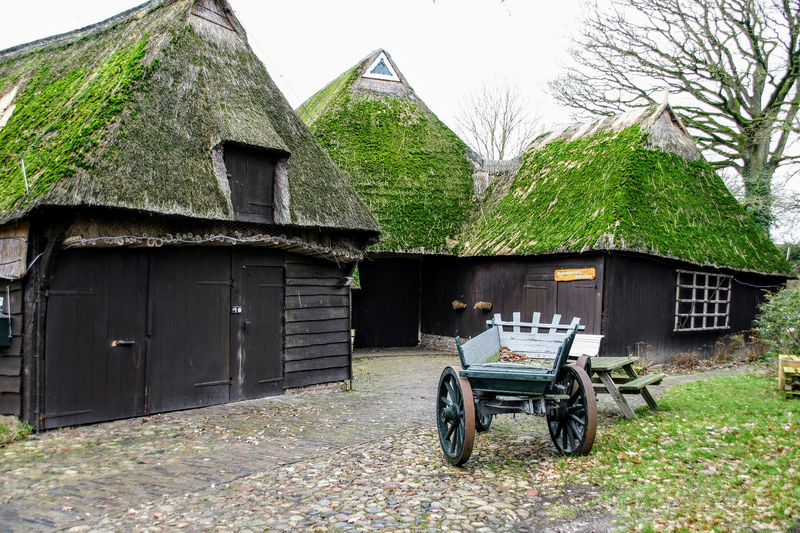
Take a look at old farm life in the lively Museum Village Orvelte, where time seems to have stood still. The cobblestones and old cobblestones lead you past Saxon farms and craft businesses. Visit the blacksmith who turns iron into art, see how wooden clogs are made and admire how the shepherd manages to get the flock into the sheepfold.
A bit unexpected, but definitely recommended is Zoo Bizar, in the middle of the monumental village. In this smallest zoo in the Netherlands you come face to face with – according to the owners – ‘bizarre’ animals. Armadillos run past your feet at great speed, a pot-bellied pig waddles around quietly and Flemish giants jump around you. Under the guidance of experts, you will learn everything about these special animals and you can even hold a tarantula and snake. At least if you dare.
10. Water as friend and foe in Flevoland
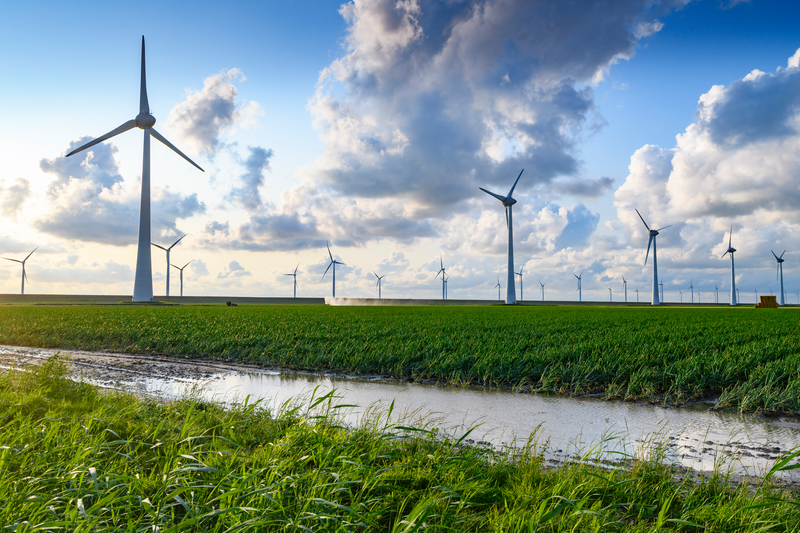
The province of Flevoland consists of two polders: the Noordoostpolder and the Flevopolder. Both were created when parts of the former Zuiderzee were drained. Where the waves of the Zuiderzee once lapped, a whole new land was created between 1942 and 1968. Since then, high dikes have protected the vast landscape of grasslands, fields and forests that you will find throughout the province.
In the Netherlands we have been living by the water, below sea level, for centuries and consider that the most normal thing in the world. We know the primal forces of the sea, know how to control them and are masters at building ships that can navigate the oceans. Water as a friend, water as an enemy and water as the lifeblood of exploration and overseas trade. In the Batavialand museum in Lelystad, learn about land reclamation, admire archaeological finds and experience the Dutch commercial spirit aboard the VOC ship Batavia.
11. Lightning visit to Groningen: the Martinitoren
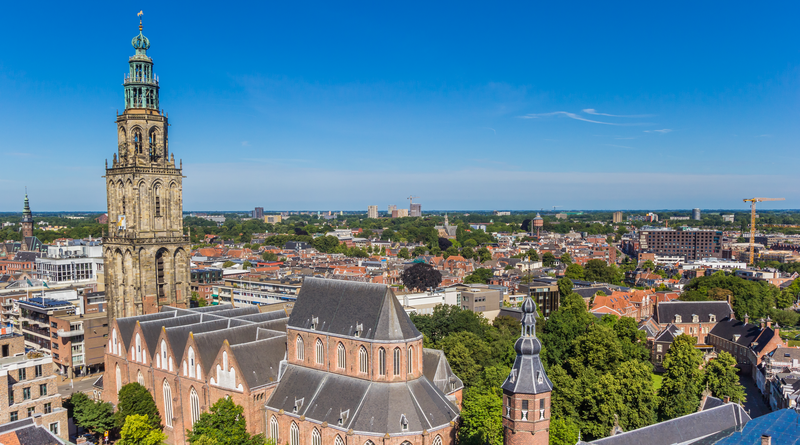
The Martinitoren, or ‘the old gray one’ as many Groningen people affectionately call the 92 meter high tower, is the symbol of Groningen. The tower has an eventful past. For example, the first tower from the 13th century was destroyed by lightning and a fire caused by a second strike caused damage that caused the next tower to collapse in 1468. A year later, construction began on the current Martinitoren, which (surprisingly) was also struck by lightning – a lightning rod was finally installed in 1838 – and had to be restored several times.
Brave the three hundred steps with a view of the vaults of the Martini Church and past ancient ornaments until you step through the narrow passage of the clockwork attic. The position between the dials of the clock, the screeching seagulls in the air, the lively bustle of the market below you and the view over the city and Ommelanden make it more than worth the climb.
12. The large fire butterfly in Weerribben-Wieden National Park
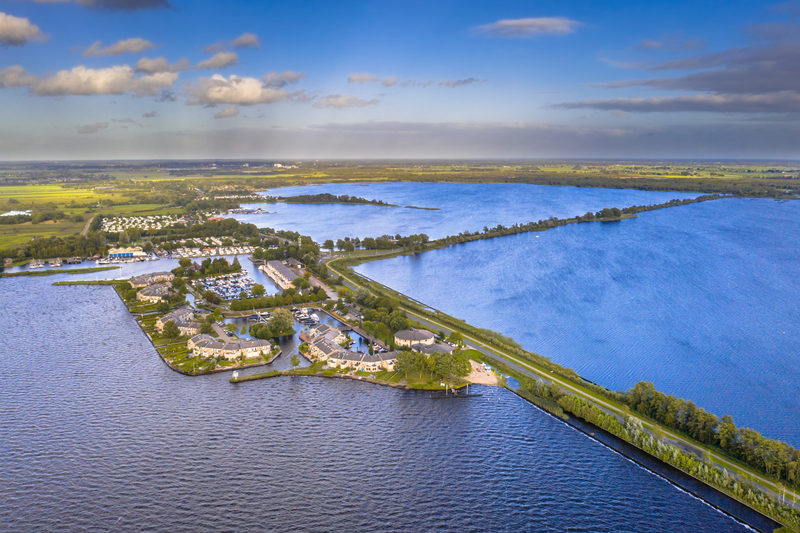
With 10,000 hectares, Weerribben-Wieden National Park is the largest contiguous low peat bog area in Northwest Europe. The park shows how open water can slowly turn into land. This process, also referred to as land formation, creates vibrating peat: a swampy mass that is usually just walkable. As the peat gets thicker and drier, it turns into a swamp forest. Take a walking or cycling tour through the peace and space of the park or sail with an electric boat or canoe along the reed lands and flowery hay fields. Spot wetland birds such as the black tern, grass snakes, foxes and even otters. Please note: in the spring, during the breeding season, some parts are closed.
With a bit of luck you will see the rare large fire butterfly fluttering around, which, contrary to its name, only has a wingspan of about 30 millimeters. This subspecies (batava) is only found in three low moor areas in Northwest Overijssel and Southeast Friesland: the Weerribben, the Wieden and the Rottige Meente. Nowhere else in the world can you find this orange-black spotted butterfly.
13. The underground labyrinth of Valkenburg Castle
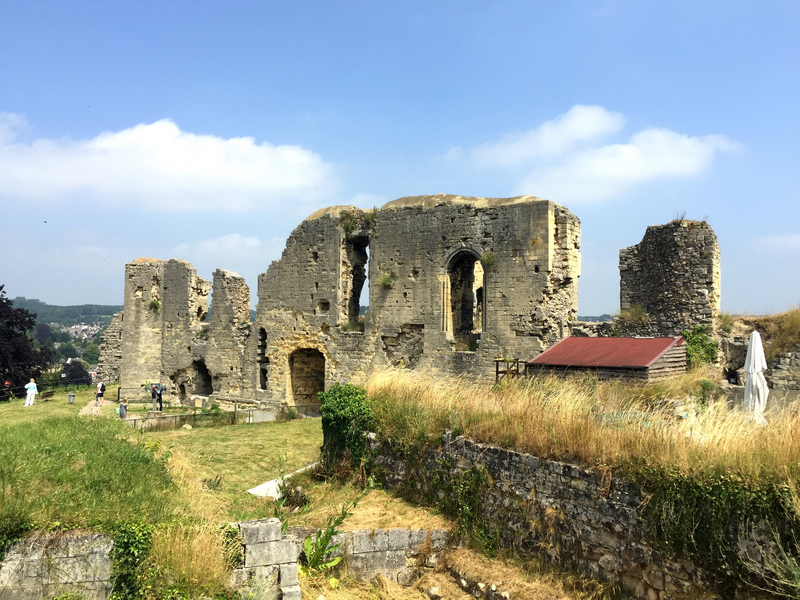
The ruins of the medieval castle of Valkenburg tower high above the city of Valkenburg. The castle, built in the 11th century, has a turbulent history full of sieges, destruction and reigns of knights and dukes . Finally, after being reconquered in 1672, it was finally destroyed by Stadholder William III to prevent future threats. Wander around the ruins through the knight’s hall, defense tower, old chapel and artillery room. Then disappear into a subterranean system of escape corridors that lead to the darkness of the Velvet Cave.
The corridors were created by mining marl, a mixture of clay and lime that was used, among other things, in the construction of the castle. The maze of jagged passageways was used by the knights to escape the castle, attack the enemy from the rear and resupply the castle. Tip: visit the Christmas market in the Velvet Cave and experience the unique, cozy and somewhat mysterious atmosphere.
14. Defy the 465 steps of the Dom Tower
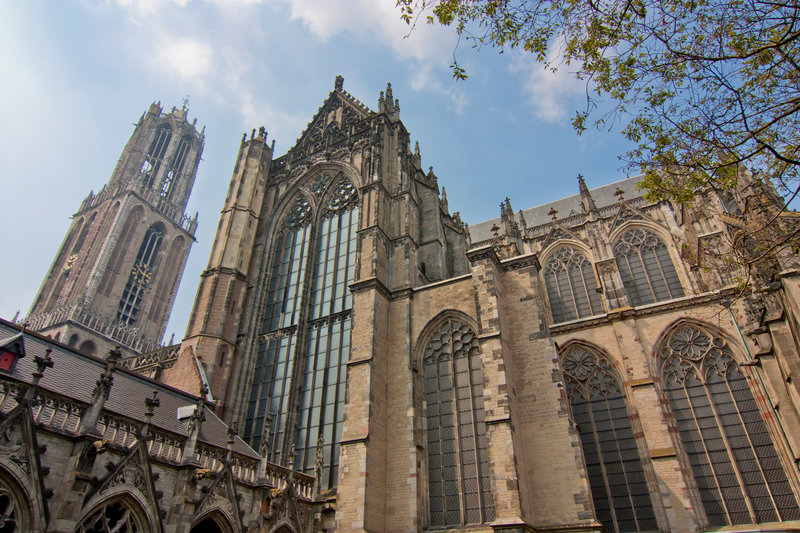
As the roots of the city, the remains of the Roman fortress Traiectum from the year 47 lie under Utrecht’s Domplein. Where you will find the remains of a Roman civilization underground, the medieval Dom tower has risen above the city as an icon for hundreds of years. The Gothic church tower was built in 1382 on the Dom Church. From this church, founded in the 7th century by Saint Willibrord, the Christianization (the conversion of peoples to Christianity) of the Low Countries started. Take an underground journey of discovery through two thousand years of history at the historical attraction DOMunder.
Climb the 112 meter high Domtoren, the highest church tower in the Netherlands, and admire the unique clock collection of fourteen bells – which weigh over 31,000 kilos. After a tough climb of 465 steps, you can enjoy a panoramic view of the city from a height of 100 meters. Spot the music building TivoliVredenburg, the Leidsche Rijn, the park Lepelenburg and even Amsterdam in clear weather.




